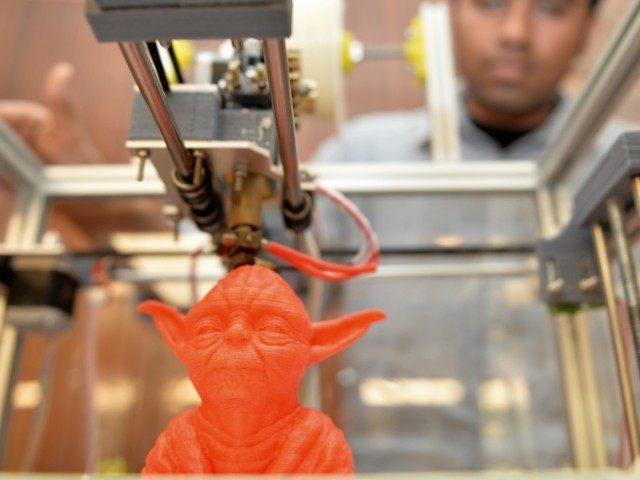3D printing has been around for several decades, but expiring patents are driving costs down and major tech breakthroughs are driving up speed. The combination is about to move 3D from a fun toy to one of the hottest industrial and medical trends.
Traditional manufacturing has been “subtractive,” with metal and wood being cut, drilled and ground for at least 15,000 years. But 3D printing is “additive,” building a part by adding plastic and metal layer by layer by layer. According to Stratfor Global Intelligence, it is the difference between breaking down versus building up products.
Research and technology in additive manufacturing is moving up the complexity chain from plastics, to metals, and then to ceramics–and now the Chinese are working with bone. The unique business opportunity for additive manufacturing is that very complex internal structures, such as the grains in wood and honeycomb structure of bone, which have been almost impossible to replicate, can now be manufactured.
One-off consumer goods production has led the way in additive manufacturing. 3D printers can now make on toys the spot that match your child’s face or have some type of other unique personalization. Additive manufacturing can meet the requirement of repeatability to maximize performance and product fit.
One of the more lucrative one-off uses of 3D printing may be medical. Back in May, China’s Xi’an Particle Cloud announced that after 5 years of development, it had successfully completed animal testing on its 3D printed artificial bones. Using a printing process it calls Filament Free Printing (FFP), the company is able to fabricate the intricate honeycomb of bone structures, which are completely biodegradable. When inserted into a rabbit’s body, the bone almost immediately began growing new cells on its surface, thus proving to be a success in treating bone loss and damage.
Speed has been the issue preventing additive manufacturing for heavy industry, which needs to consider time, size and scale of production. It is theoretically possible to 3D print commercial office towers. A really big “printer” could produce steel beam skeletons and ceramic walls, but economies of scale have favored subtractive manufacturing.
Yet a new 3D printing technology developed by Dr. Joseph DeSimone and other University of North Carolina scientists just published a paper in Science about a new 3D printing system called “continuous liquid interface production.” Unlike conventional 3D printing, which prints in layers, their printer continuously forms a new object. As a result, they say, it may be 25 to 100 times faster than current 3D layering up.
Using a process called “photopolymerization,” a “printer” draws an object continuously out of a bath of liquid resin through a layer of dissolved oxygen. To sculpt the desired item, a projector underneath the resin pool shoots cross-sectional images of the object as beams of UV light to make a resin solidify to create the desired item. As Vox reported: “Light, in a sense, is the blade the printer uses to sculpt its products.”
The process may be able to leverage the big advantage of 3D printing–that it lets users easily customize or tweak designs by making changes to software, rather than building new manufacturing machines–to mass produce consumer products.
The U.S., Germany and the U.K. are the global leaders in 3D printing, but China has pledged hundreds of billions of dollars toward developing the process. With the speed of development, 3D printing may soon be a spectacularly disruptive technology.

COMMENTS
Please let us know if you're having issues with commenting.